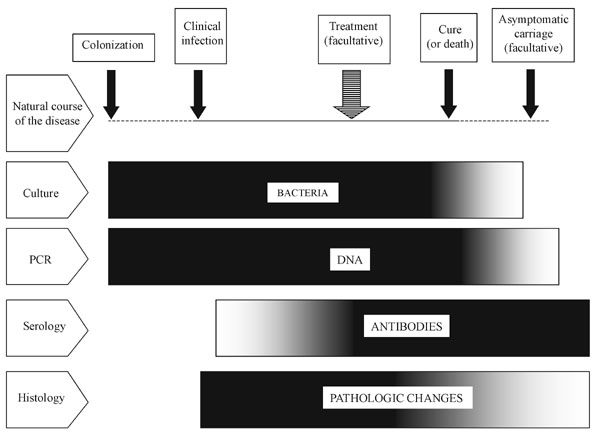Volume 8, Number 2—February 2002
Perspective
Traditional and Molecular Techniques for the Study of Emerging Bacterial Diseases: One Laboratory’s Perspective
Figure 1

Figure 1. . Diagram describing the respective places of culture-, polymerase chain reaction-, serology- and histology-based approaches for the diagnosis of acute bacterial infections, according to the natural course of the disease. Isolation and culture are possible as long as live bacteria are present in tissues, i.e., from the colonization to the treatment or to the end of the clinical manifestations (or shortly earlier). Bacterial DNA can be detected during the same period and also as far as dead microorganisms remain in tissues. Specific antibodies appear during the clinical course of the disease and persist generally for months or years. Pathologic changes can be observed soon after the contamination and, in an acute infection, will decline rapidly after elimination of the bacteria.